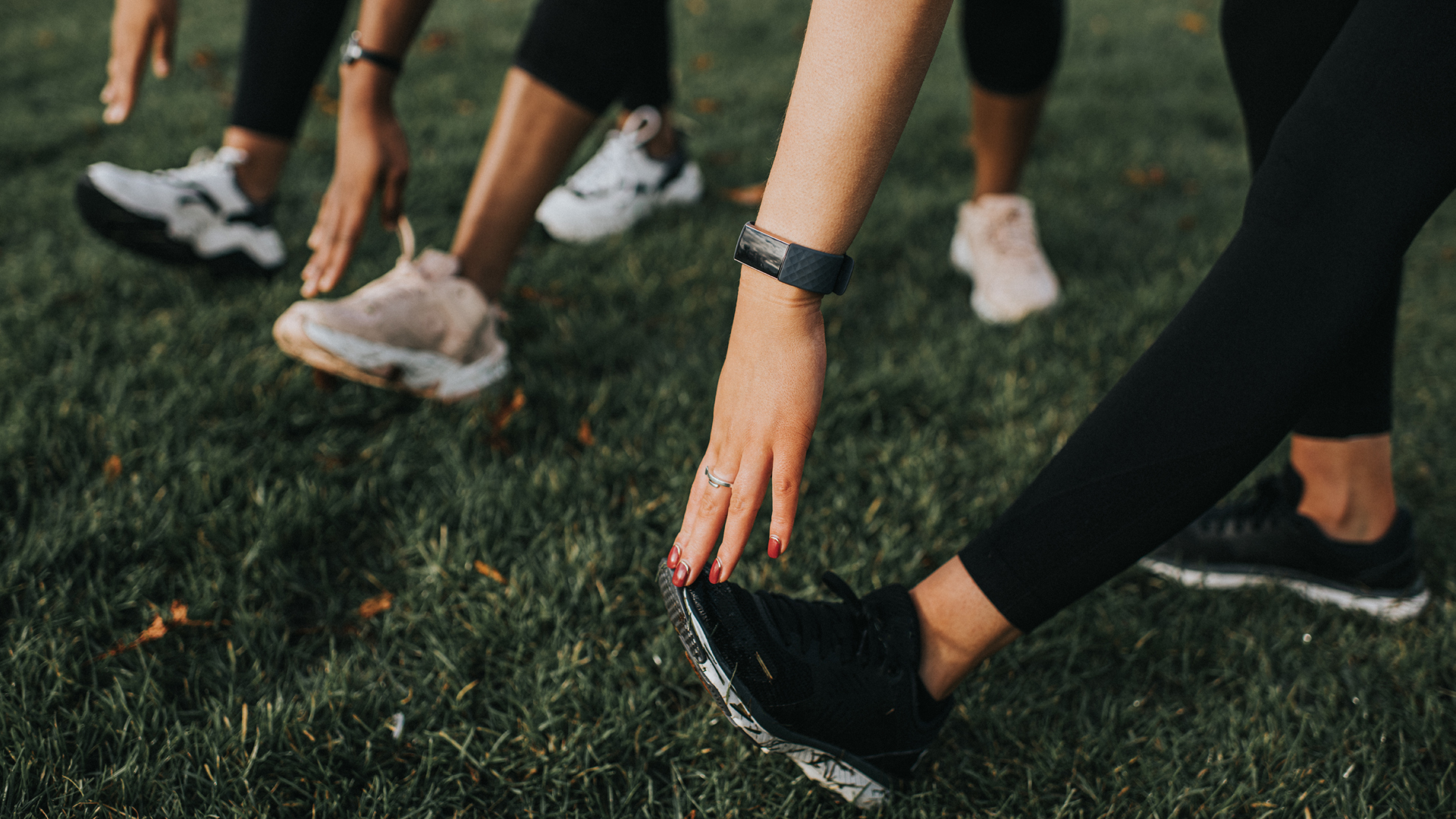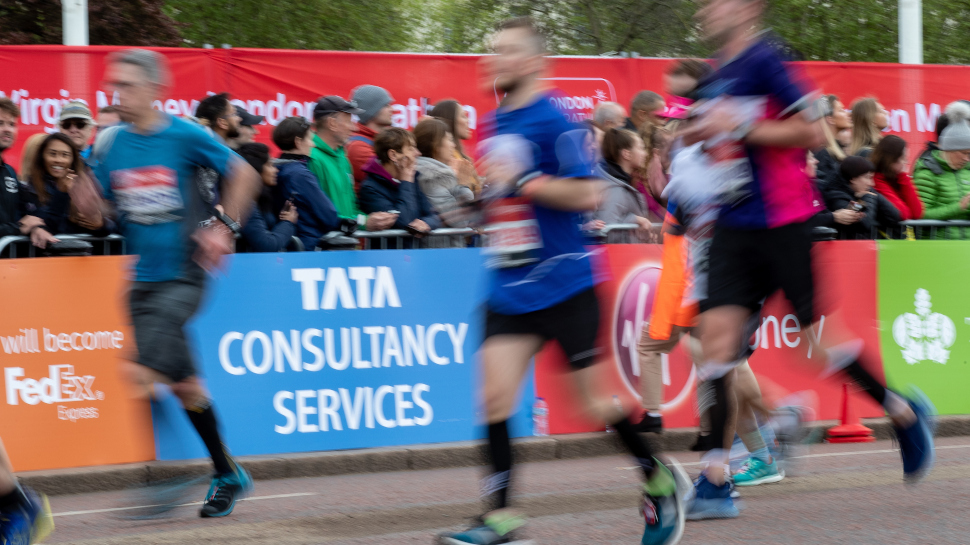This is what it’s really like to run a marathon
Running a marathon this year? This is what it’s going to feel like

As regular readers of the TR fitness pages over the last three months will know, I’ve been documenting my training as a first-time marathon runner. I’ve been writing up reports of my training hiccups, asking the experts for first-time marathon advice, and reviewing the best running shoes and best running watches to use on race day.
After all this research and a few months of tough training runs, I developed a plan based on my goals for the race. I had four main objectives:
- Best-case scenario. Run across the finish line in under four hours (4:00:00).
- Secondary goal. Run across the finish line in 4:15:00.
- Tertiary goal: Finish the race.
- Stick to my nutrition and hydration plan. Have fun. Smile when I run past my wife so she thinks I’m doing well.
Mike Tyson famously once said “everyone has a plan until they get punched in the mouth”, and that has never been more true than when preparing to run 26.2 miles, or 42 kilometers. Something is bound to go wrong. In my case, despite sticking to a relatively risk-free diet of plain carbohydrates before the race, I began to feel rumblings in my stomach the night before. It was probably brought on by nerves.
However, I remained undaunted and stuck to my plan. I ate the same breakfast I ate before my long training runs (overnight oats and a banana on the train an hour later). I got to the race village in Brighton’s Preston Park and warmed up. I left my bag with my wife and allowed myself to be herded into the steel pens that funneled the 10,000-plus runners toward the start. I found myself smiling from ear to ear. The nerves had gone and excitement had taken their place. We were off!

1-10 km
The first couple of kilometers feel too slow, as you’re stuck in a big crowd of runners all around you. Over time, as runners travel at different speeds, the crowd spaces out, but that initial first kilometer was traveled at a slow six minutes 30 seconds (6:30).
Once the crowd spreads out, it’s tempting to overcompensate and run fast, especially as you have lots of energy at the start and want to ‘bank’ time for later. However, my strategy was the opposite: stay slow, conserve energy, and gradually speed up over time. Running the first half of a race slowly, and the second half faster, is what’s known in running as a ‘negative split’ and I was trying to stick to this method.
Consequently, even as the runners spread out, I tried to stay around 5:50 per kilometer, roughly 10s/km slower than my target race pace of 5:41.
Sign up for breaking news, reviews, opinion, top tech deals, and more.
Around kilometer nine, I felt my stomach rumble again. That could mean nothing good.

11-20 km
The first half of the course was hilly. Very hilly, which makes for grueling work. After the first 10km was over and done with, I began to speed up to hit my target pace. The road left the cheering crowds of town behind and took us along long stretches of beautiful Brighton coast. The sun was out, the wind was down, and it was still relatively cold: perfect conditions.
Eventually, we began going downhill and my gastrointestinal issue intensified. I was forced to make a choice: either queue for one of the course-side porta-potties (or portaloos, as we call them in the UK) and potentially sacrifice my target times, or risk carrying on and facing the consequences.
Long-distance running can get ugly: on marathon day, you’ll see people run out of energy, walk, stop, wobble unsteadily on their feet even as they run, pass out on the side of the road, and perhaps occasionally throw up or poop themselves due to mid-race nausea. You can mostly avoid this by hydrating and carb-loading properly before race day and topping up with sugar sources during the run, but when you’ve gotta go, you’ve gotta go.
I chose the shortest queue and got in and out of the porta-potty in about three minutes. I figured that I could run a little faster downhill and begin to make up the time.

21-30 km
Over the halfway mark and back into town, I ran past cheering crowds of people which lifted my spirits. I deliberately increased my pace again, aiming for that negative split and a sub-four-hour time, and began to hit kilometers between 5:30 and 5:40.
My gastro issues were gone after my quick pit stop, things were looking good, and the ‘runner’s high’, a natural release of mood-altering endocannabinoid chemicals induced by serious exercise, was starting to kick in.
This was the best part of the race: I could feel my muscles grinding out and my heart pounding, but I was around cheering crowds, my energy levels were good, and the plan was working. I was smiling when I spotted my wife for the second time, checking one goal off my list.
However, a dull ache in my knees and hips was starting to form, which I ignored. Refusing to walk to rest my legs, I compartmentalized the slowly increasing pain, pushed it to one side, and kept up my faster pace.

31-36 km
The hurt locker. As we left town and began to run through sparser suburban areas with fewer crowds, my knees and hips throbbed more fiercely. I forced another packet of energy gel down my throat.
My plan was to consume one at the start line and one every 40 minutes, to maintain an adequate level of sugar in my body, but the sickly sweet blackcurrant goo and the texture, somehow both sticky and slippery, put me unpleasantly in mind of baby food.
I picked someone ahead of me in a bright red and yellow shirt, aiming to follow and pass them, only to be crushed as they picked up their pace and ran out of sight. My kilometer times began to slip backward towards 5:50 again.
Around me, I could hear other people’s breath becoming ragged, and lots of them were stopping to walk. We were all hurting together, all running in the same direction, everyone running through the same dark tunnel toward a spot of light at the finish line. I was determined not to walk if I could help it.
I passed someone face-up on the ground, glassy-eyed but responsive, being tended by two paramedics.

37-42 km
I changed the view on my watch, the Garmin Forerunner 265, toward the end of the last block of kilometers to hide my total time for the race and show a readout only for the kilometer I was running (which Garmin refers to as ‘lap time’). If I missed the four-hour mark, I didn’t want to feel despondent about it: I wanted to finish the race on a high.
As we looped through the tail-end of an empty industrial estate and back towards the final packed stretch on Brighton pier, my playlist - which had changed from Metric’s pounding electro-rock hit Synthetica to a bass-heavy remix of themes from Avatar: The Last Airbender - was practically lost among the cheering crowds. Someone to my left yelled, “you’re so close!”. I passed red-and-yellow-shirt guy, who had stopped at a water station and wanted to punch the air. Got you, I thought. I felt like a caveman who’d hocked a spear at a deer, wounded it, and had been running it down for miles. This is what I had evolved to do, and my tribe was eating tonight.
On those final few kilometers, I ate half an energy gel before throwing the rest away in disgust, followed by the half-full water bottle tucked into the Flipbelt holder around my waist. I wouldn’t need it anymore. This isn’t as irresponsible as it sounds: every organized race has a cleanup crew to sweep the course for precisely this reason before the roads reopen to the public again. The course, especially near the water stations, is littered with discarded bottles, paper cups. running jackets, and energy gel packets.
Buoyed by a wave of cheers from strangers, I sped up on the final stretch, my knees and hips practically screeching in displeasure, and ran through the inflatable archway bearing the legend ‘Finish’. I stopped running. Someone gave me a medal from a cardboard box. Someone else pressed a flapjack energy bar into my hands, a non-alcoholic Lucky Saint beer, and a bottle of water. I thought it was a bit unfair to ask me to carry all this, considering what I’d just gone through, but I thanked them all the same and staggered out of the pen, feeling light-headed and pretty elated.
I crossed the line in 4:04:43, just short of my best-case scenario goal, and I succeeded in every other metric I set for myself. But regardless of whether you complete the marathon in three hours or six, running the race represents a commitment to consistency.
You’ve trained hard, shown up on the day, followed through on a promise you made to yourself, and endured something difficult, sometimes pushing your body to its limits. You’ve created something, along with all the other runners around you, and that’s very satisfying. It’s a hard thing to do, but I’d totally recommend the experience for casual runners looking for a real challenge to train for.

Matt is TechRadar's expert on all things fitness, wellness and wearable tech.
A former staffer at Men's Health, he holds a Master's Degree in journalism from Cardiff and has written for brands like Runner's World, Women's Health, Men's Fitness, LiveScience and Fit&Well on everything fitness tech, exercise, nutrition and mental wellbeing.
Matt's a keen runner, ex-kickboxer, not averse to the odd yoga flow, and insists everyone should stretch every morning. When he’s not training or writing about health and fitness, he can be found reading doorstop-thick fantasy books with lots of fictional maps in them.